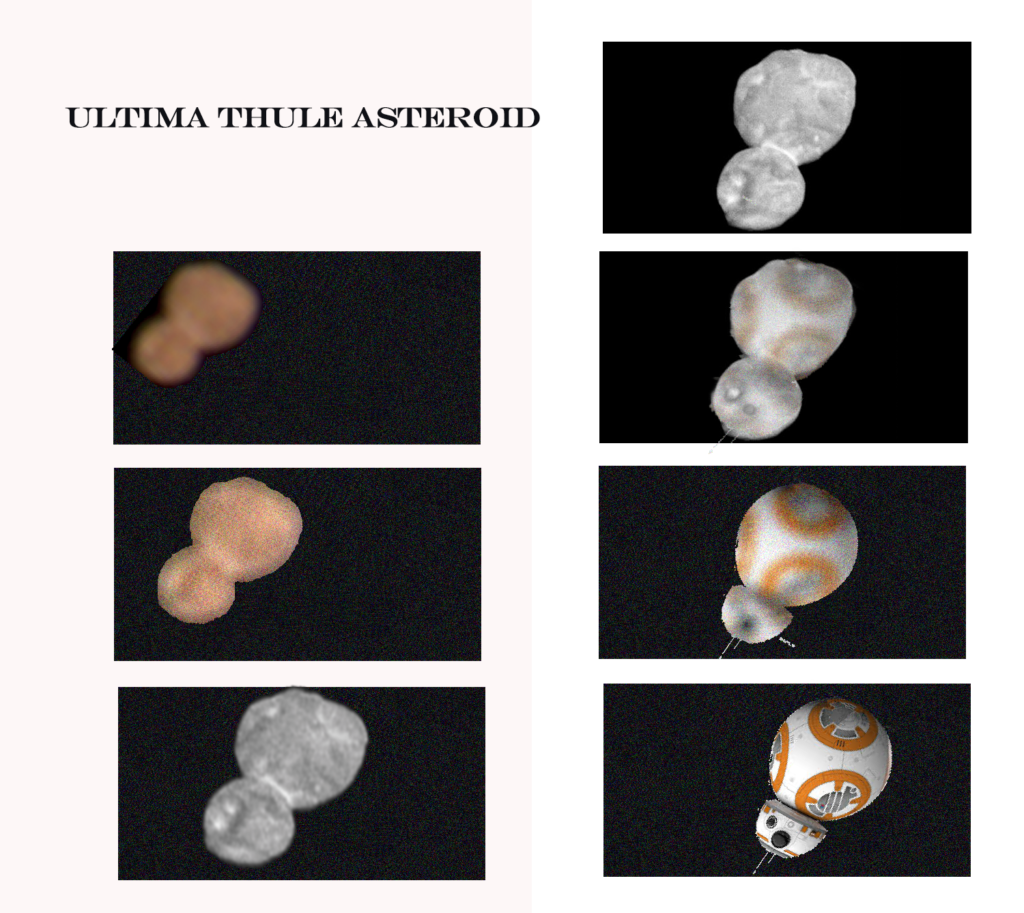(TA News, 1 Feb. 2019; NASA)”Ultima Thule” looks like a movie prop from Star Wars!
Images from the New Horizons probe have been described as “looking like a snow man.” The pictures taken of an asteroid 85.000 miles away are, supposedly, the images of the furthest reaches of our solar system yet to be caught on camera.
Now, however. the images have had color added to them and there is a big surprise.
The first color images of Ultima Thule were taken on January 1, 2019 at 4:08 Universal Time . These raw images showed an object with a rust like reddish surface. NASA first used Multispectral Visible Imaging Camera (MVIC), produced by combining the near infrared, red and blue channels, and a Long-Range Reconnaissance Image Procol (LORRIP) to increase the spatial resolution in the black and white. This image at the bottom left, offered a higher spatial resolution than MVIC by approximately a factor of five and added what looked first like to eyes to the “snowman.”

Perhaps the best part about the new Star Wars trailer was seeing BB-8, the adorable rolling ball robot in the new Star Wars movie, bounce and roll itself across the screen. It looked so familiar and so cute and so perfect as the new movie’s answer to R2-D2. And the best thing about it? BB-8 is a real robot and not CGI.
At right, the color has been overlaid onto the LORRIP image to show how the object may appear tn real color. The surprise is that now “Ultima Thule” looks remarkably like the cute rolling ball droid “BB-8” from Star Wars. BB-9 in the movie was not just a CGI creation of the computer wizzes at Disney! As BB-8 bounces and rolla itself across the screen it became the new movie’s answer to R2-D2.
